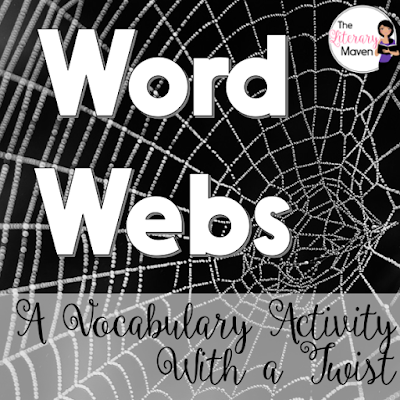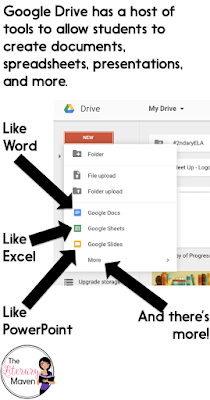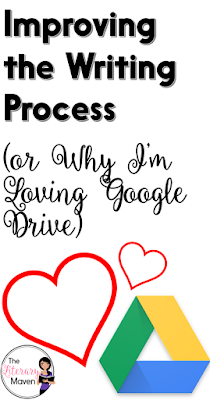
This is my fifth in a series of posts about my online course, Common Core: Implementing the Writing Standards. In my first post, I gave an overview of the writing standards. In my second post, I showed how the gradual release process can be used with writing. In my third post, I explain why it is so important that basic writing skills be explicitly taught, no matter the age or grade level.
My fourth and most recent post focused in on argument writing, arguably (oh, I am so punny!) the most important of the three types of writing called for in the Common Core standards: argument, informational (this post's focus), and narrative writing (my next post).
Informational writing, otherwise known as explanatory writing, communicates information accurately. This kind of writing has one or more, often interconnected purposes: to increase readers’ knowledge or to help readers better understand a procedure or process. You can read more a more thorough explanation in the Common Core's Appendix A (page 23).
Informational writing strongly ties in with Informational and Literature Standards 1 & 2, citing evidence from the text and providing an objective summary. Objective. Meaning no one cares what you think or feel. Somewhere in middle school or elementary school someone taught my students to start everything they write with "I think" or "I feel" or "I believe." I am constantly reminding them there is NO first person in objective writing. Connected to that struggle is stating main idea, yes still a struggle in ninth grade. Again, main idea has nothing to do with what you think or feel; it is based on the facts of a text.
One way I practice summarizing and stating main idea is with "money" summary sentences. Students are given $2 to write a summarizing sentence. Each words costs 10 cents and words like a, the, of, etc. are free. Students' goal is to write a summary sentence that "spends" as close as they can get to $2 without going over.
I practice with this set of four passages, perfect for the gradual release process of "I do, we do,
two do, you do," but you could also try this strategy with any text you are reading in class. Tying it in to money makes it fun for students while pushing them to succinctly communicate the main idea. As students share their money summaries, I constantly ask them to self assess: "Is that the big idea or just a detail? Is that objective or does it include your opinions?"
Once students have mastered a summary sentence or if I feel like that strategy just isn't working for some students, I will often use a second strategy for writing summary topic sentences. This is a three step method: identify the item (story/article) + a summary verb + finish your thought = summary topic sentence. The item, the title of the text, is given by the teacher and the summary verb is selected from a list, so the first two steps are low stress. The third and final part is what the student must come up with, the "finish your thought."
I provide sample summary topic sentences for students along with the list of summary verbs. Students then have four opportunities to practice with texts that they have read recently in class. You can assign the items or let students select.
Finally, students select two of their topic summary sentences to develop into full summaries. After your approval of their topic summary sentence, students will generate a fact outline. You may also want to check their fact outline before they proceed to writing their summary. I tell my students that their summary can only include the approved facts, no other ideas.
To get students excited about writing informational texts and to expose them to the features of effective informational writing, make sure your students are reading exemplary informational texts or "mentor" texts. Will they read boring stuff on standardized tests? For sure! So why subject them to boring stuff in class?
Mentor texts can and should be complex and difficult, but it doesn't have to be boring. All of the elementary school teachers out there are saying duh!, you should always use mentor texts, but this is a newer idea at the secondary level. For a great read on use of mentor texts (and even mentor sentences) at the secondary level, check out "Making the Most of Mentor Texts" by Kelly Gallagher. It's a topic that really deserves its own post.
Where to find great mentor texts? My go to place to find them is in magazines. I subscribe to a variety of magazines connected to my students' interests. I keep magazines in the classroom for independent reading and when issues get too old, they are always handy for collages or other projects. But before putting them out in the classroom, I skim them for articles I think might be good reads.
One example would be an article from a recent Sports Illustrated issue (in general SI has really strong writing, just keep that swimsuit issue out of the classroom), titled "Young, Gifted & Homeless." Anything about sports = 99% of my boys are now interested in reading, hooray! One of the article's strong features is its weaving of interviews with statistics, mixing narrative elements with fact. Another strong feature is the evidence of the author's careful research, drawing on a number of sources for information. After reading the article and discussing how it was written, students could choose their own topic to engage in writing, making sure to include those same features that made the mentor text effective.
I would love to hear about how you use informational writing and/or mentor texts in your classroom. Next up: narrative writing.




































